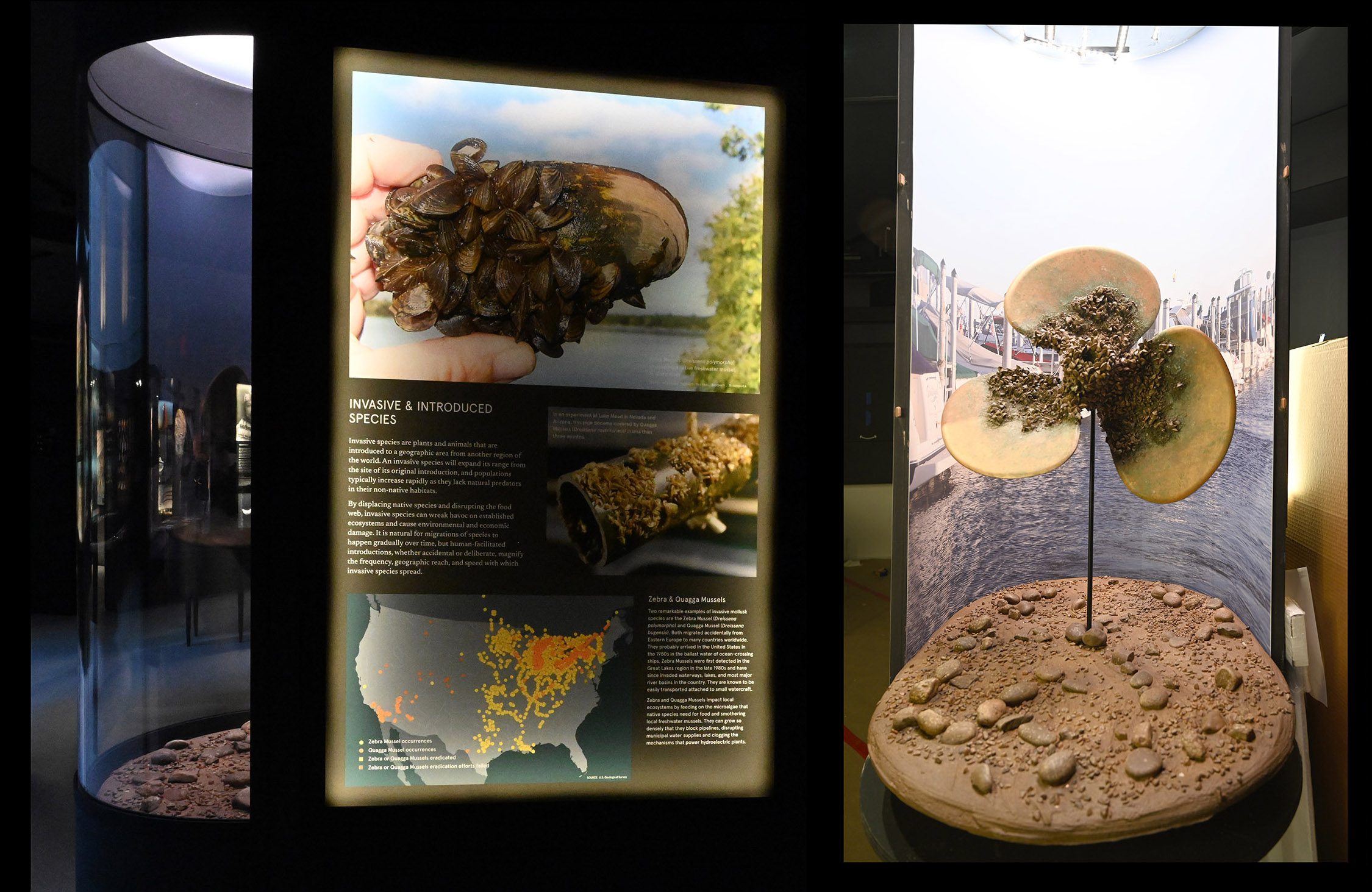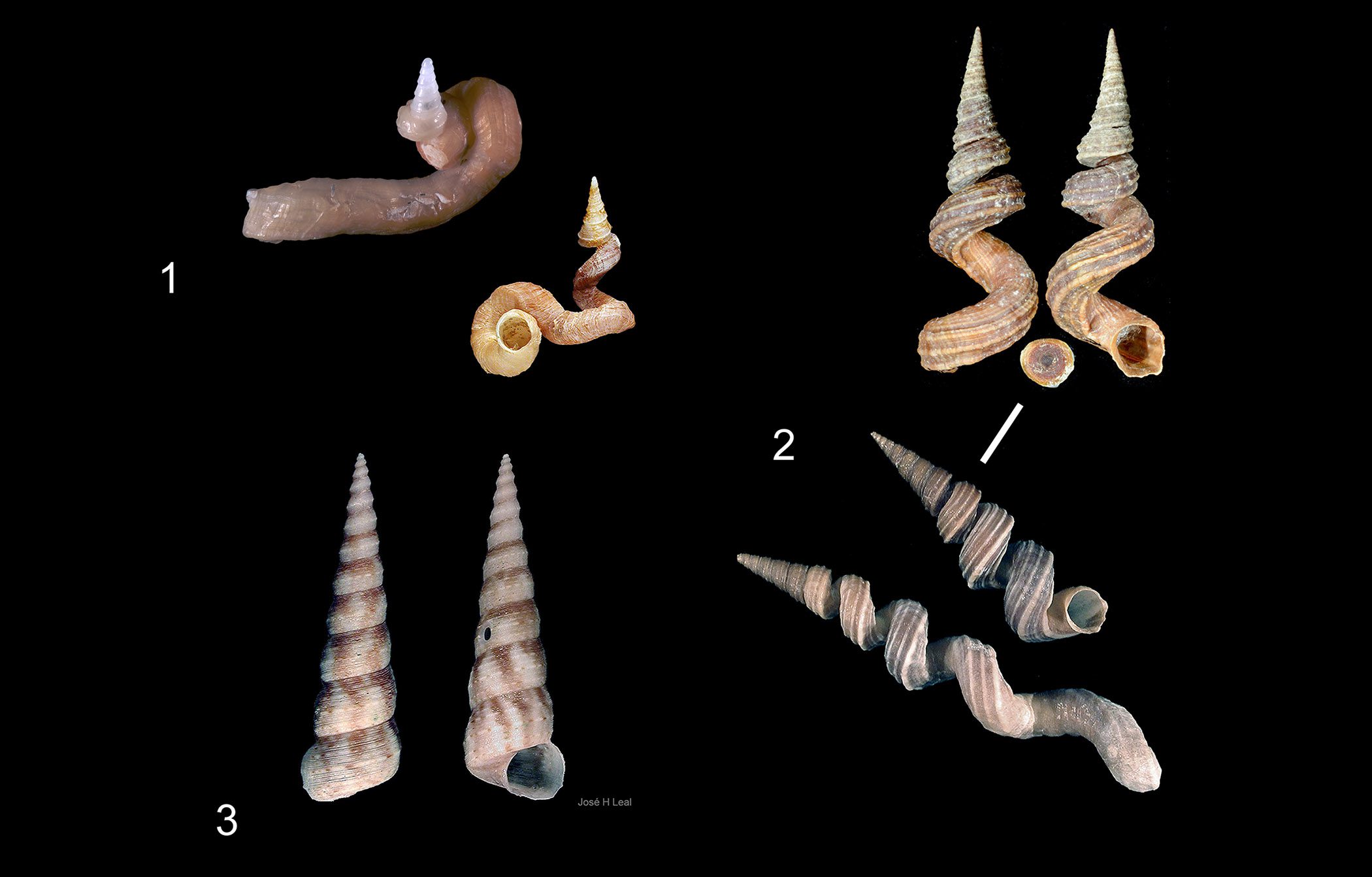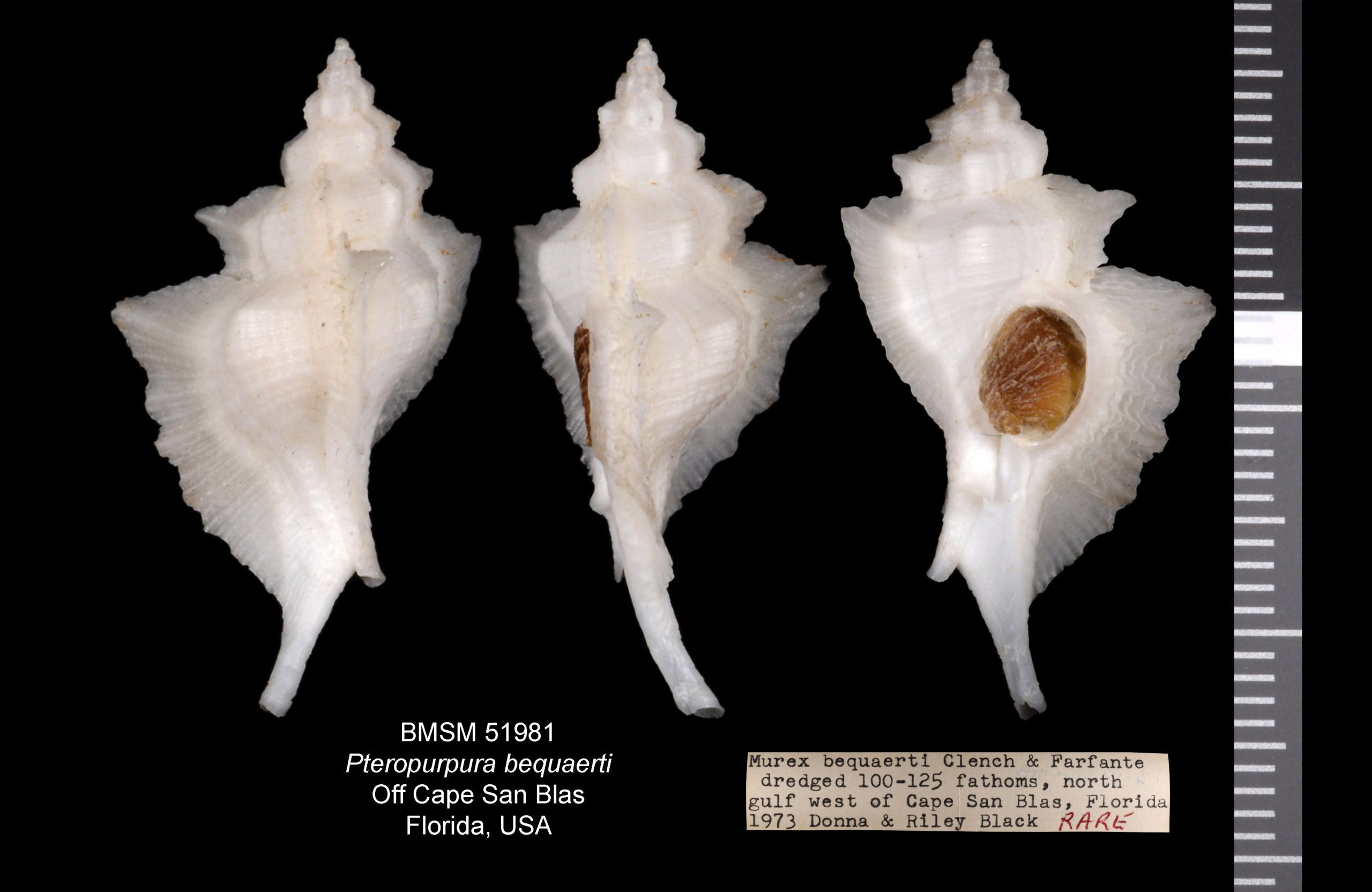In the photos below, the image at left shows the distinctive hinge teeth of the Southern Quahog, Mercenaria campechiensis (Gmelin, 1791), as well as the distinct “scars” that hint at areas of contact between the living clam’s muscles and its shell. And you may be wondering about the image on the right? Well, the story goes like this: A few years ago, after taking the photo of the hinge, it looked to me like two people facing each other. But I was left with a lingering feeling that I had seen those “faces” before. Then, one morning, presto: I woke up realizing that the quahog hinge resembled some of the more repulsive officers and bystanders in Hieronymus Bosch’s late-Middle Ages (circa early 1500s) painting “Christ Carrying the Cross.” That work always impressed me by the individualism, power, and emotional content it brings.
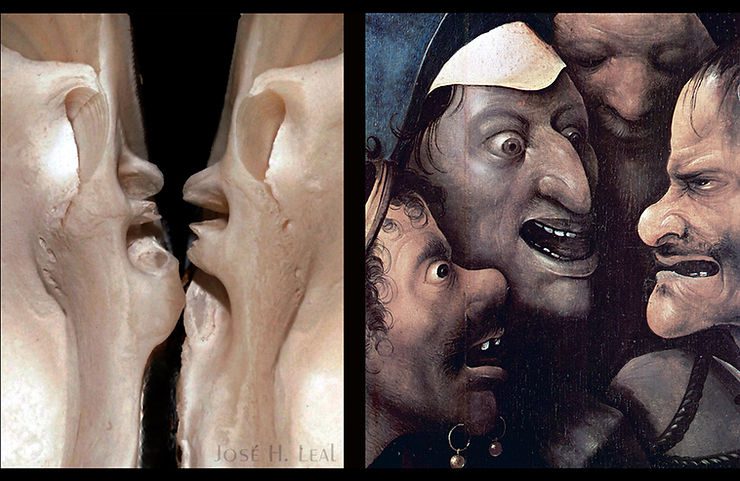
The Southern Quahog, a member of the venus clam family Veneridae, is a local species that may grow to be more than six inches. The hinge is the main area of connection between the two valves (the half-shells) of a bivalve mollusk. The hinge usually has a number of strongly interlocking “teeth,” which in some cases may resemble the cogs in a gear wheel.
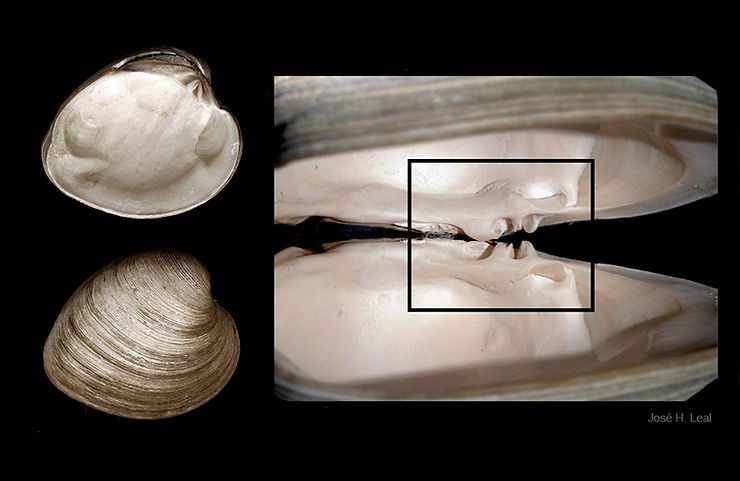
The hinge prevents a predator from sliding the shell valves past each other to reach the soft parts of the animal inside. It achieves that while still allowing the animal to slightly open the shell (by relaxing the adductor muscles that, when contracted, keep the shell shut) for feeding and breathing. Then again, I hope you agree with (and enjoyed!) my free association of the image of a shell structure with characters in medieval art!
#mercenariacampechiensis #southernquahog #hinge #shellvalve #hieronymusbosch #medievalart #freeassociation
